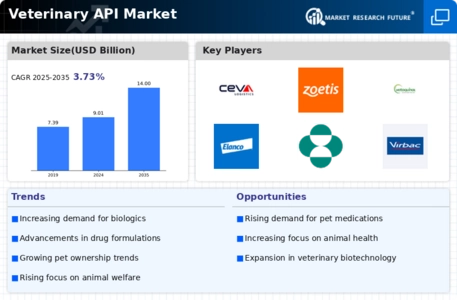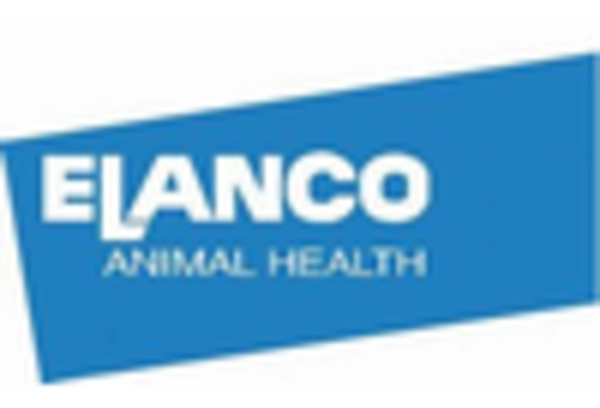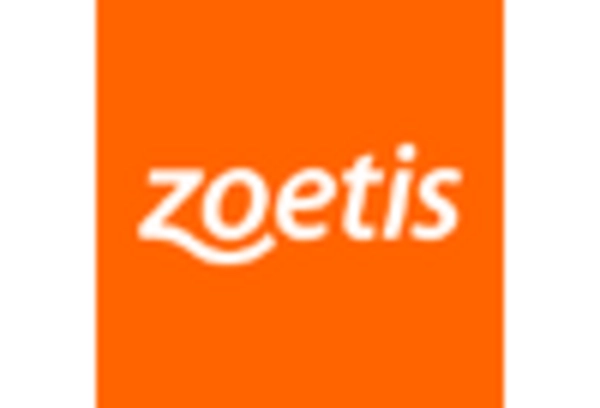Focus on Animal Welfare
The increasing emphasis on animal welfare is reshaping the Veterinary API Market. Consumers are becoming more aware of animal rights and welfare issues, leading to a demand for humane treatment practices in veterinary care. This societal shift is prompting veterinarians to adopt more comprehensive health management strategies, which often include the use of advanced APIs. Market data suggests that there is a growing preference for products that are not only effective but also ethically produced. As a result, the Veterinary API Market is likely to see a rise in the development of APIs that align with these ethical considerations, catering to a more conscientious consumer base.
Increasing Pet Ownership
The rise in pet ownership is a notable driver for the Veterinary API Market. As more households adopt pets, the demand for veterinary services and medications increases correspondingly. Recent statistics indicate that pet ownership rates have surged, with approximately 70% of households in certain regions owning at least one pet. This trend is likely to continue, leading to a heightened need for veterinary pharmaceuticals and APIs. Consequently, the Veterinary API Market is expected to experience robust growth as veterinarians seek effective treatments and preventive measures for a growing pet population. The increasing awareness of pet health and wellness further fuels this demand, as pet owners are more inclined to invest in quality veterinary care and medications.
Rising Demand for Animal Protein
The growing The Veterinary API Industry. As populations increase and dietary preferences shift towards protein-rich foods, the livestock sector is under pressure to enhance productivity and health. This demand translates into a greater need for veterinary care and pharmaceuticals to ensure the health of livestock. Market analysis indicates that the livestock segment of the veterinary pharmaceuticals market is expected to grow substantially, driven by the need for effective disease management and prevention strategies. Consequently, the Veterinary API Market is likely to benefit from this trend, as farmers and producers seek reliable APIs to maintain the health and productivity of their animals.
Advancements in Veterinary Medicine
Technological advancements in veterinary medicine are significantly influencing the Veterinary API Market. Innovations such as advanced diagnostic tools, targeted therapies, and biologics are reshaping treatment protocols for various animal diseases. The introduction of new APIs that cater to specific conditions has enhanced treatment efficacy, thereby improving animal health outcomes. Market data suggests that the veterinary pharmaceuticals segment is projected to grow at a compound annual growth rate of over 5% in the coming years. This growth is indicative of the increasing reliance on sophisticated veterinary solutions, which in turn drives the demand for APIs that support these advanced treatments. As veterinary practices adopt these innovations, the Veterinary API Market is poised for expansion.
Regulatory Support for Veterinary Products
Regulatory frameworks that support the development and approval of veterinary products are crucial for the Veterinary API Market. Governments and regulatory bodies are increasingly recognizing the importance of animal health and are streamlining the approval processes for veterinary APIs. This regulatory support not only facilitates quicker access to essential medications but also encourages research and development in the veterinary sector. Recent initiatives have been aimed at enhancing the safety and efficacy of veterinary products, which is likely to bolster market confidence. As a result, the Veterinary API Market may witness an influx of new products, catering to diverse animal health needs and expanding treatment options for veterinarians.



















Leave a Comment